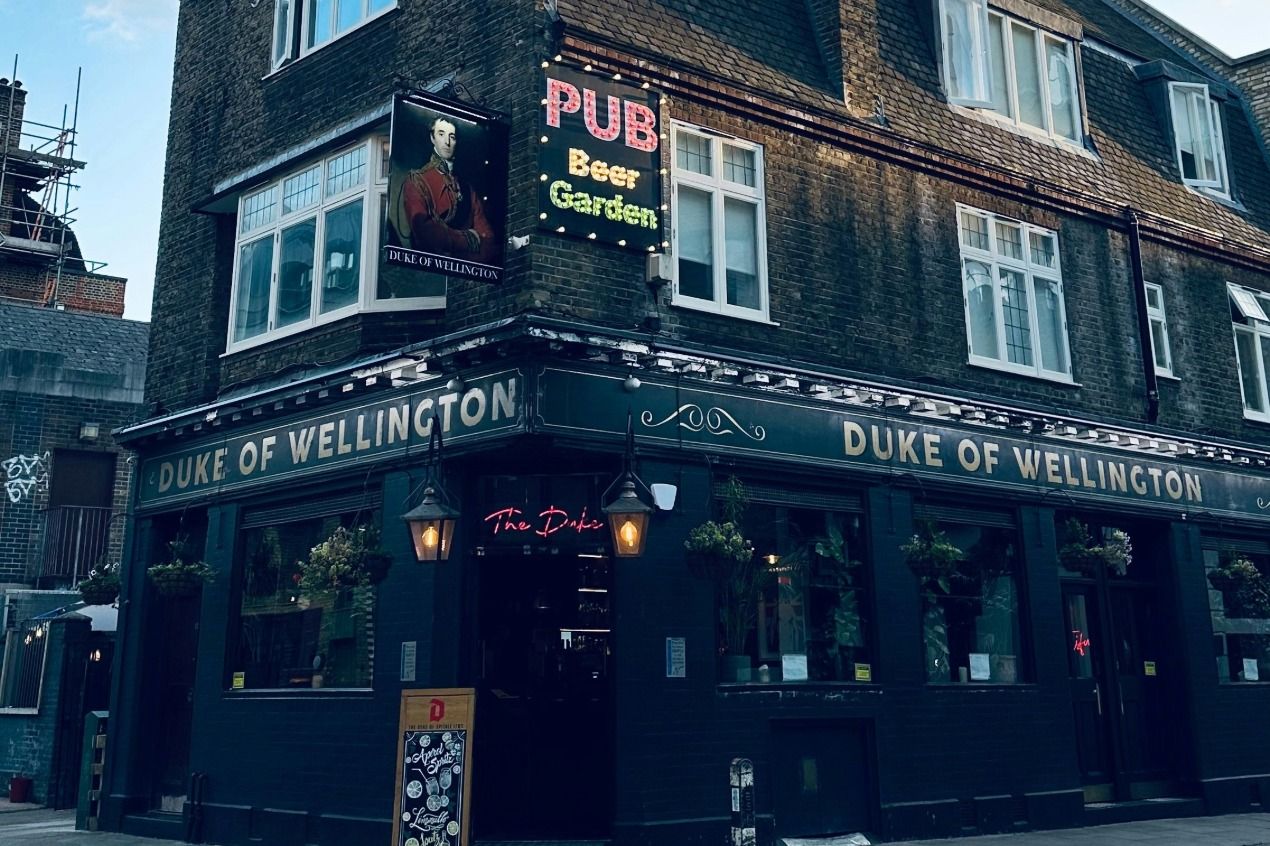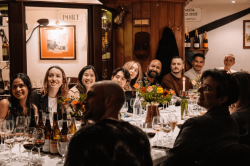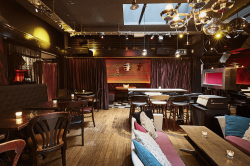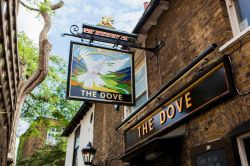Where to Drink
Reviving Historic London Pubs
Discover the innovative strategies breathing new life into London's historic pubs while preserving their rich cultural heritage.
In the heart of London, where cobbled streets whisper tales of centuries past, the city’s historic pubs stand as monuments to its rich cultural tapestry. These establishments, often steeped in history, have served as gathering places for locals and tourists alike, offering not just a pint but a glimpse into the social fabric of the community. However, in recent years, many of these beloved venues have faced the threat of closure, pushed to the brink by rising costs, changing consumer habits, and the relentless march of modernization. Yet, amidst this struggle, a revival is taking place, breathing new life into these iconic spaces. This narrative explores the journey of reviving historic London pubs, examining the challenges, innovative strategies, and the passionate individuals behind the movement.
The Historical Significance of Pubs in London
London’s pubs are more than just places to drink; they are historical landmarks that reflect the city’s evolution. Dating back to the Roman era, these establishments have played crucial roles in the social and political life of the city. From the iconic Ye Olde Cheshire Cheese, which has hosted literary giants like Charles Dickens, to The Grapes, frequented by Samuel Johnson, each pub carries stories that are woven into the very fabric of London’s history. As community hubs, they have fostered connections, provided refuge, and served as venues for lively debates and celebrations.
However, the historical significance of these pubs often goes unrecognized in the face of economic pressures. Many of these buildings are protected under heritage laws, which can complicate renovation efforts. Owners and operators must navigate a maze of regulations while trying to maintain the character and charm that make these pubs unique. The challenge lies in balancing preservation with the need for modernization to attract a new generation of patrons.
Understanding the Challenges
Reviving historic pubs is no small feat. The challenges are multifaceted, ranging from financial constraints to shifting consumer preferences. Rising rents and operational costs have made it increasingly difficult for traditional pubs to remain profitable. Many owners find themselves at a crossroads: invest heavily in renovations to meet contemporary standards or risk losing their establishment altogether.
Moreover, the changing landscape of drinking culture poses its own set of challenges. Younger generations are often drawn to craft cocktails, trendy bars, and unique experiences that differ from the traditional pub setting. To survive, historic pubs must adapt without losing their essence. This delicate balance is where creativity and innovation come into play, as pub owners seek to blend the old with the new.
Innovative Approaches to Revitalization
In the quest to breathe new life into historic pubs, many owners are embracing innovative approaches that honor tradition while appealing to modern tastes. One successful strategy has been the integration of local craft beers, which not only supports local brewers but also creates a unique selling point for the pub. For instance, The Old Red Lion in Islington has successfully curated a rotating selection of local brews, drawing in a crowd that values quality and locality.
Another effective approach is the incorporation of food offerings that reflect contemporary culinary trends. Pubs like The Eagle in Farringdon have transformed their menus to include gourmet dishes, elevating the pub dining experience. By partnering with local chefs or hosting pop-up events featuring different cuisines, these establishments can attract a diverse clientele and create a vibrant atmosphere.
Community Engagement and Events
Community engagement has emerged as a cornerstone of the revival strategy for many historic pubs. By fostering connections with local residents and organizations, these establishments can create a sense of belonging that resonates deeply with patrons. Hosting events such as quiz nights, live music, and art exhibitions can transform a pub into a cultural hub, encouraging repeat visits and word-of-mouth recommendations.
For example, The Black Heart in Camden has built a loyal following by hosting regular music events and supporting local artists. This not only attracts patrons looking for entertainment but also reinforces the pub’s role as a community space. Engaging with the local community can also extend to partnerships with nearby businesses, creating a network of support that benefits everyone involved.
Preserving Heritage While Embracing Modernity
One of the most significant challenges in reviving historic pubs is preserving their heritage while embracing modernity. Many pub owners are finding creative ways to maintain the character of their establishments while updating the interior and offerings. This might include restoring original features, such as wooden beams and antique furnishings, while incorporating modern amenities like craft cocktail bars or outdoor seating areas.
Take, for instance, The Churchill Arms in Kensington. This pub is renowned for its stunning floral displays and traditional décor, yet it has successfully integrated a Thai kitchen that draws in food enthusiasts from all over the city. This blend of the old and the new not only preserves the pub’s historical charm but also positions it as a must-visit destination in London.
The Role of Technology
In today’s digital age, technology plays a pivotal role in the revival of historic pubs. From social media marketing to online booking systems, embracing technology can significantly enhance a pub’s visibility and customer engagement. Many pubs are now utilizing platforms like Instagram and Facebook to showcase their unique offerings, share stories about their history, and connect with their audience on a personal level.
Additionally, technology can streamline operations, making it easier for pub owners to manage inventory, track customer preferences, and optimize their menus based on real-time data. The use of apps for ordering and payment can also improve the customer experience, allowing patrons to enjoy their time without the hassle of long wait times. By integrating technology thoughtfully, historic pubs can attract a tech-savvy clientele while maintaining their traditional charm.
Case Studies of Successful Revivals
Several historic pubs in London have successfully navigated the challenges of modernization while preserving their unique identities. The Coach in Clerkenwell, for example, has undergone a remarkable transformation. Originally a traditional pub, it now boasts a modern, stylish interior while still honoring its heritage with original artwork and historical photographs. Its menu features locally sourced ingredients, appealing to the contemporary palate without losing the essence of a classic pub.
Another notable example is The Fox & Anchor in Smithfield, which has embraced its historical roots by restoring its Victorian charm and offering a carefully curated selection of ales and spirits. The pub has also implemented a strong community engagement strategy, hosting events that celebrate local culture and history, such as storytelling nights and charity fundraisers. These efforts have not only revitalized the pub but have also strengthened its connection to the community.
Looking to the Future
The future of historic pubs in London hinges on a delicate balance of preservation and innovation. As the city continues to evolve, these establishments must adapt to changing consumer preferences while remaining true to their roots. The successful revival of historic pubs is not just about maintaining a business; it’s about preserving a vital part of London’s cultural heritage.
For aspiring pub owners and operators, the key takeaway lies in understanding the unique story that each pub has to tell. By leveraging history, engaging with the community, and embracing innovation, it is possible to create a vibrant space that resonates with both locals and visitors. The revival of historic London pubs is not merely a trend; it is a movement that celebrates the city’s past while looking forward to a bright future.
In conclusion, the journey to revive historic London pubs is a testament to the resilience of community and culture. With passion, creativity, and a commitment to preserving heritage, these establishments can thrive in an ever-changing landscape. As they continue to adapt and innovate, they will undoubtedly remain cherished landmarks for generations to come.
Header image sourced from Unsplash.
















